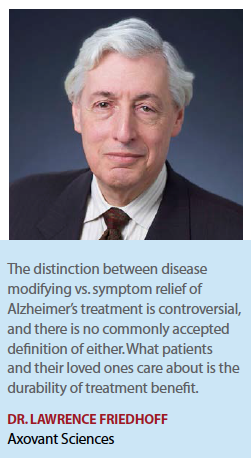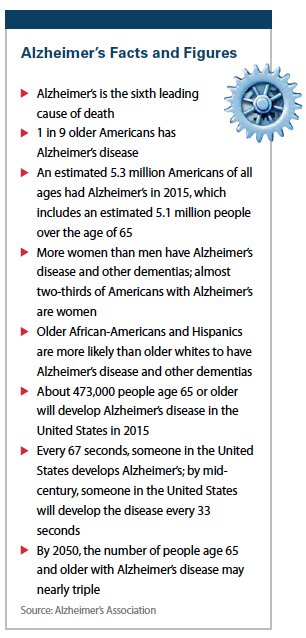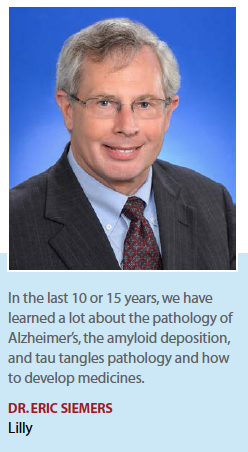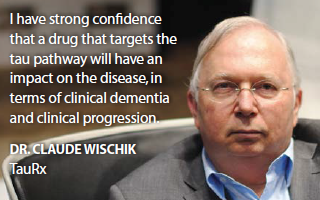 Alzheimer’s is at the forefront of brain research; 90% of what we know about Alzheimer’s has been discovered in the last 15 years. But while research has discovered much about this devastating disease, there is still much we don’t know.
Alzheimer’s is at the forefront of brain research; 90% of what we know about Alzheimer’s has been discovered in the last 15 years. But while research has discovered much about this devastating disease, there is still much we don’t know.
Alzheimer’s is one of the most complex diseases researchers have ever studied. There are many reasons Alzheimer’s research is so challenging. To begin with, the brain is the most complex organ in the body and the disease is correspondingly complicated.
Alzheimer’s disease is an irreversible, progressive brain disorder that slowly destroys memory and thinking skills, and eventually the ability to carry out the simplest tasks. Estimates vary, but experts suggest that more than 5 million Americans may have Alzheimer’s.
A large segment of the American population — the baby boom generation — has begun to reach age 65, when the risk for Alzheimer’s and other dementias is elevated. By 2030, the segment of the U.S. population age 65 and older will increase substantially, and the projected 72 million older Americans will make up about 20% of the total population (up from 13% in 2010).
The number of Americans surviving into their 80s, 90s, and beyond is expected to grow dramatically due to advances in medicine and medical technology, as well as social and environmental conditions.
 One of the great mysteries is why Alzheimer’s happens. Researchers don’t fully understand what causes the disease. In people with early-onset Alzheimer’s, a genetic mutation is generally the cause. Late-onset Alzheimer’s arises from a complex series of brain changes that occur over decades. The causes probably include a combination of genetic, environmental, and lifestyle factors.
One of the great mysteries is why Alzheimer’s happens. Researchers don’t fully understand what causes the disease. In people with early-onset Alzheimer’s, a genetic mutation is generally the cause. Late-onset Alzheimer’s arises from a complex series of brain changes that occur over decades. The causes probably include a combination of genetic, environmental, and lifestyle factors.
The first Alzheimer’s treatments focused on neurotransmitter-targeted pharmaceuticals. Available medications on the market include donepezil (Aricept), rivastigmine (Exelon), and galantamine (Razadyne), which are used to treat mild to moderate Alzheimer’s, and memantine (Namenda), which is used to treat moderate to severe Alzheimer’s. These drugs may help maintain thinking, memory, and communication skills, and help with behavioral problems.
As basic science began to shed more light on Alzheimer’s, drug research focused on disease-modifying treatments. Imaging studies have shown there are abnormal deposits of proteins that form beta amyloid plaques and tau tangles throughout the brain, and once-healthy neurons stop functioning, lose connections with other neurons, and die.
“In the last 10 or 15 years, we have learned a lot about the pathology of Alzheimer’s, the amyloid deposition, tau tangles, and how to develop medicines," says Eric Siemers, M.D., a distinguished medical fellow of the Alzheimer’s disease global team at Lilly.
Researchers, however, disagree about the Alzheimer’s disease process, specifically about when the amyloid plaques and tau tangles occur.
People understand that the two are related to each other, Dr. Siemers says.
“They’re both important in the pathology of Alzheimer’s disease," he says. “In other words, patients have to have them both, amyloid plaques and tau tangles, to be given a pathological diagnosis of Alzheimer’s disease."
Still, researchers are very much in competing research camps: those who are researching amyloid plaque, those doing tau research, and those continuing work on neurotransmitter research.
Much research over the last 10 years has focused on the amyloid plaques, but there have been failures in this area. For example, Pfizer and J&J in 2012 discontinued research of the drug bapineuzumab after a Phase III trial showed the monoclonal antibody failed to improve cognitive or functional performance.
 More recently, Pfizer is testing the waters again in Alzheimer’s research. In February 2015, The Alzheimer’s Drug Discovery Foundation and Pfizer’s Centers for Therapeutic Innovation announced a collaboration designed to advance the development of small-molecule drugs for Alzheimer’s disease. Pfizer also has a 5HT6 antagonist (SAM-760) for Alzheimer’s disease, which is in Phase II development.
More recently, Pfizer is testing the waters again in Alzheimer’s research. In February 2015, The Alzheimer’s Drug Discovery Foundation and Pfizer’s Centers for Therapeutic Innovation announced a collaboration designed to advance the development of small-molecule drugs for Alzheimer’s disease. Pfizer also has a 5HT6 antagonist (SAM-760) for Alzheimer’s disease, which is in Phase II development.
Other companies, such as TauRx Pharmaceuticals, are working on therapies that address the tau protein. Claude Wischik, M.D., Ph.D., co-founder and executive chairman of TauRx, says research confirms that tau pathology progresses early in Alzheimer’s disease.
“There are data that tau pathology is preceding amyloid in the brain; in cerebrospinal fluid they are changing at about the same time — there is no amyloid priority," Dr. Wischik says. “We can show the effects of the toxic tau fragments that we first isolated from tangles when expressed in transgenic mice. The toxic tau starts at three months in the early vulnerable brain regions, but by the time the mice are 12 months old it spreads into the main cortex of the mouse brain, and there is no contribution of amyloid whatsoever in this process of spread and toxicity."
Dr. Wischik says in some rare cases, amyloid changes are able to trigger the series of events that lead to Alzheimer’s, but he believes in the majority of cases, it is changes in the tau protein that are independent of amyloid that lead the disease process. He cites one study where about 3,000 patients who were assessed have no amyloid pathology, using the Thal stage system, but of those 56% were already at Stage 2 or beyond in tau pathology, using the Braak staging for tau tangles.
Dr. Siemers says in the future when more therapies become available, doctors will consider using combinations of various treatments. Pharma companies, he predicts, could do trials that, from a study design scientific standpoint, are specifically looking at a combinations.
The Amyloid Research Camp
Much of the research in the last 10 years has been and continues to be on therapies that address the build up of amyloid plaque in patients with Alzheimer’s disease. There have been setbacks in this area of research. For example in July Biogen announced results of its product, aducanumab, human recombinant monoclonal antibody. A Phase 1b trial showed aducanumab significantly reduced beta amyloid plaque in the brain but failed to slow mental decline.
Despite the setbacks, research in amyloid continues. Biogen in September 2015, announced that the first patient has been enrolled in the Phase II studies, ENGAGE and EMERGE, for aducanumab for early Alzheimer’s disease.
Also in September, Novartis and Amgen announced a collaboration to develop and commercialize a BACE inhibitor program in Alzheimer’s disease.
Novartis’ oral therapy CNP520 will be the lead molecule and further compounds from both company’s preclinical BACE inhibitor programs may be considered as follow-on molecules.
CNP520 is an oral drug designed to prevent the production of different forms of amyloid and has the potential to prevent, slow or delay the symptoms associated with AD. It is currently in Phase I/IIa trials. CNP520 is planned to be included in a pioneering prevention study in people with a genetic risk of developing AD, in collaboration with the Banner Alzheimer’s Institute.
 Lilly also continues its research of amyloid, despite recent struggles. The company’s monoclonal antibody, solanezumab, in secondary analyses appeared to show an impact among mild-stage patients. In July 2015, Lilly released data from a delayed-start three-and-a-half year extension study, with a group of patients from the original placebo arm continuing.
Lilly also continues its research of amyloid, despite recent struggles. The company’s monoclonal antibody, solanezumab, in secondary analyses appeared to show an impact among mild-stage patients. In July 2015, Lilly released data from a delayed-start three-and-a-half year extension study, with a group of patients from the original placebo arm continuing.
The delayed-start method was used to see if solanezumab had an effect that is consistent with slowing progression of disease. This method is an extension study where patients in both placebo and treatments arms have the option to continue on therapy.
Solanezumab didn’t meet primary endpoints in the studies Expedition and Expedition 2. In this secondary analysis, results from Expedition and Expedition 2 were pooled and only patients with mild dementia at the beginning of the study were included.
“The studies included at the beginning patients with mild plus moderate Alzheimer’s, but had always planned to separate out those two groups," Dr. Siemers says. “When we looked at the people with mild disease there was actually a statistically significant effect on cognition in the first study Expedition and a trend in the second study, which was Expedition 2. We pooled the data from Expedition and Expedition 2 because they were identical studies and we combined the samples to do the analysis with a bigger sample size. When we did that we saw there was a statistically significant effect on cognition and also on a measure of function."
This secondary analysis is being used to support the trial design of another study in patients with mild Alzheimer’s, Expedition 3, which is expected to have the last patient visit in October 2016.
Another company researching amyloid therapies for Alzheimer’s is Alzheon. The company’s lead product, ALZ-801, is a small molecule and is designed to enhance cognition and function on top of currently approved symptomatic therapies.
Previous Phase III studies of the compound by Canadian company Neurochem (now Bellus Health) showed a favorable safety profile but primary efficacy was inconclusive. But further analysis of data from this study showed there was significant improvements in cognition and function in those patients who were positive for the APOE4 gene. There was inhibition of amyloid formation and reduction of soluble amyloid in CSF cerebral spinal fluid in those with Alzheimer’s. There was also significant reduction in brain atrophy.
The apolipoprotein E (APOE) gene is involved in late-onset Alzheimer’s. Researchers have found that one subtype of this gene, the APOE e4, is associated with an increased number of amyloid plaques in the brains of Alzheimer’s patients. Epidemiology studies say about 50% to 60% of Alzheimer’s patients have this gene.
“We found that in the patients who are most severely affected by the disease, the APOE4 positives, and in particular the APOE4 homozygous, there was a very compelling clinical improvement," says Martin Tolar, M.D., Ph.D., founder, president, and CEO of Alzheon. “That’s the population that we’re going to focus in. We have seen in the APOE4 population strong efficacy on both cognition and function on the standard ADAS-cog and CDR-SB scales."
Alzheon’s compound is a prodrug of tramiprosate with improved pharmacokinetic variability and with a longer half-life. The company is currently conducting two Phase Ib studies. These studies will be used to support a pivotal Phase III program in 2016 for those mild-to-moderate patients who are APOE4 positive.
The Tau Research Camp
One company in the tau camp is TauRx. The company’s lead product is LMTX, which is currently in Phase III trials as a disease-modifying agent for the treatment of Alzheimer’s disease. It has a broad spectrum of activity as an inhibitor of abnormal aggregation of other proteins that underlie a number of progressive neurodegenerative disorders.
 A Phase II clinical trial that involved 321 patients in 16 clinical research centers in the UK and one center in Singapore tested three doses of the drug. The study met its predefined primary efficacy endpoint at 24 weeks on the standard scale most commonly used to measure cognitive decline in clinical trials (ADAS-cog) at the 138 mg a day dose.
A Phase II clinical trial that involved 321 patients in 16 clinical research centers in the UK and one center in Singapore tested three doses of the drug. The study met its predefined primary efficacy endpoint at 24 weeks on the standard scale most commonly used to measure cognitive decline in clinical trials (ADAS-cog) at the 138 mg a day dose.
Research done by Dr. Wischik, co-founder of TauRx, and colleagues in 1988 in Cambridge, U.K., determined that the tangles were found to be composed of abnormal filaments largely made up of a short fragment of the protein. They went on to report in 1996 that the chemical substance methylthioninium (MT) dissolves tangle filaments isolated from the human brain by selectively blocking a critical step in the process required to form the rogue filaments. The company’s first molecule, MTC, was poorly tolerated, so TauRx scientists have developed a new form that is better absorbed and better tolerated.
Phase III clinical trials of LMTX are being conducted in 22 countries. These trials are now fully recruited and the first results are expected in the first half of 2016.
Dr. Wischik says if all goes well, the company plans to have a pre-NDA meeting with the FDA in the third quarter of 2016.
“I have strong confidence that a drug that targets the tau pathway will have an impact on the disease in terms of clinical dementia and clinical progression," Dr. Wischik says.
The Neurotransmitter Research Camp
Much research over the last decade has focused on disease modifying therapies, rather than symptom relief. But disease modifying vs. symptom relief is a false dichotomy for the development of Alzheimer’s disease treatments.
Lawrence Friedhoff, M.D., Ph.D., chief development officer of Axovant Sciences and the senior VP, research and development at Roivant Sciences, says the distinction between disease modification and symptomatic treatment is controversial, and there is no commonly accepted definition of either.
“What patients and their loved ones care about is the magnitude and durability of treatment benefit," he says. “There is strong evidence that 5-HT6 receptor antagonists provide rapid benefits in both cognition and function for patients with mild-to-moderate Alzheimer’s disease, that this benefit is preserved for up to 48 weeks of treatment, and that it may increase with time relative to placebo."
Dr. Friedhoff says a recent trend in Alzheimer’s drug development has been the revival of neurotransmitter-targeted pharmaceuticals. These were the cornerstone of Alzheimer’s research in the 1990s but were largely abandoned in favor of research on beta amyloid antibodies. However, recently, two 5HT6 receptor antagonists — neurotransmitter-targeted drugs — the only two tested so far have shown benefit on cognition in well-controlled studies.
In addition to cognitive improvements, Axovant’s 5HT6 antagonist, RVT-101, also showed evidence of benefit on activities of daily living. RVT-101 is an orally administered neurotransmitter-targeted therapy with the potential to improve cognition, function, and behavior in patients with dementia. RVT-101 works by antagonizing the 5HT6 receptor in the brain, enhancing the release of acetylcholine, a neurotransmitter.
The product is being tested in a Phase III international, multi-center, study designed to evaluate the safety, tolerability and efficacy of RVT-101 in patients with mild-to-moderate Alzheimer’s disease.
Dr. Friedhoff says there are a number of products in development that may help with the psychosis and hallucinations often associated with dementia; Axovant has an option on a drug they may develop for this purpose. (PV)


















